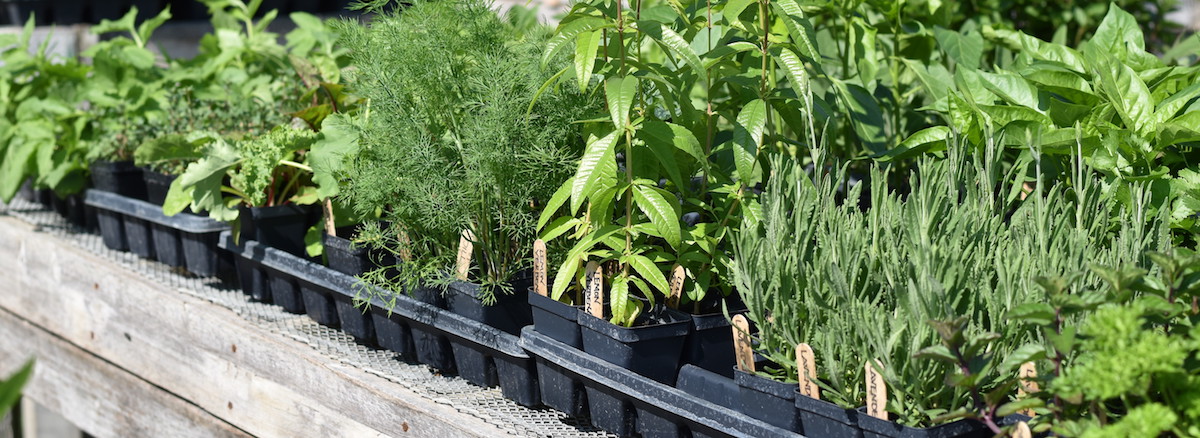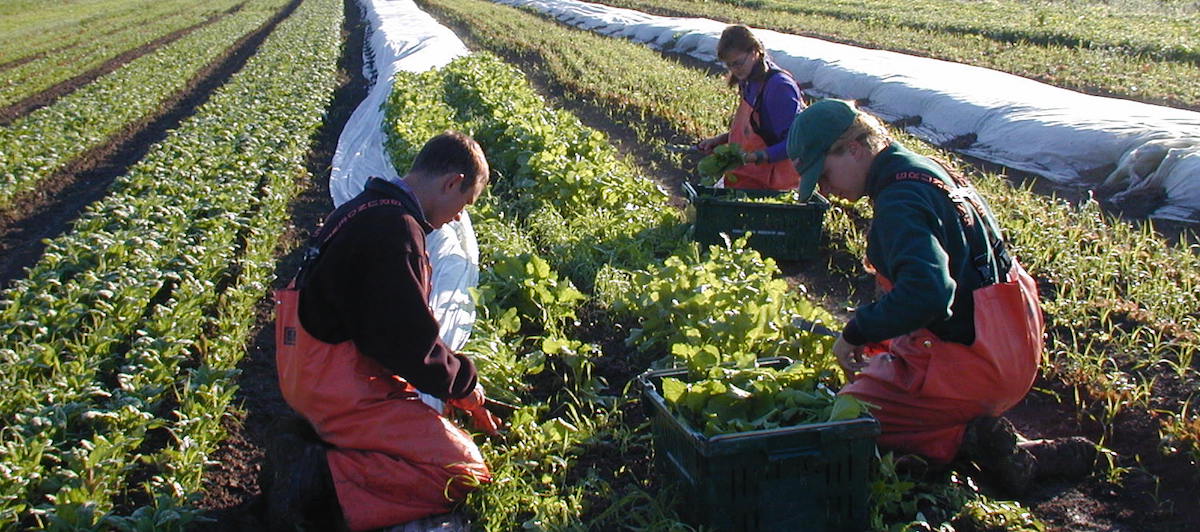What Does Community Supported Agriculture (CSA) Mean?
Community
CSAs are frequently formed by farmers, but a number have been formed by consumers. CSAs offer opportunities for people to meet in a different way and address important community issues. Some CSAs make sure that the CSA initiative does not exclude low-income families through its pricing policies. For example, several CSAs are organized as part of regional food banks, and at least one CSA offers employment for homeless individuals. Another CSA, formed by a church group, links suburban and inner-city residents. Many CSAs take on the task of helping to re-educate us all in how to shift our diets to include more fresh produce when it is in season and how to store or preserve for winter months. Some CSAs also take on composting shareholders' food scraps.
Health
Healthy soil means healthy food. When no herbicides, pesticides, or artificial fertilizers are used, ground water pollution and toxic residues on food are avoided. CSA gives consumers the chance to choose how their food is grown. Eating locally grown, freshly harvested food is the basis of a healthy diet and is recommended by health-care professionals. CSA offers the opportunity for you to reconnect with rhythms of nature by eating produce when it is in season. People who join CSAs find a meaningful way to reunite with the Earth and a community and discover a kind of spiritual nourishment which they have been missing.
Ecology
The Earth is a living being and the actions of every individual have an effect on the whole. The soil is the basis of all human life and the quality of its care and health affect not only the people who eat the food today, but also those who will depend on the soil in the future. Even though less than 1% of our population is engaged in farming, the proper tending of the environment is the concern and responsibility of every individual. It is in the consumer's interest that farmers are supported so that they can grow the highest quality, most nutritious food while preserving the highest environmental quality and soil health.
Families & Fun
CSA members are interested in more than vegetables: they like to know they are working with a professional grower who shares their environmental and social concerns, and they are interested in their fellow shareholders. Families with children are welcome at CSA gardens. A number of CSAs host local school groups for nature study or art classes in the garden. CSAs are about strengthening a sense of community. Most CSAs have a newsletter to let people know what's going on in the garden, share recipes, and announce things of common interest or concern and social events.
Learning
CSAs also act as training centers for young people who wish to learn the skills of farming and management of CSA operations. These "hands-on" trainings are called "apprenticeships." In addition, CSA members often volunteer their time to work in the garden so that they may informally learn about horticulture or other gardening skills. The Biodynamic Association acts as a clearinghouse for individuals seeking information about training, apprenticeship or employment at CSA gardens throughout North America. For more information, see our training and apprenticeship page or visit our forums for specific openings.
Seasons
Seasonal celebrations are natural when you are living closer to nature. We've heard of social gatherings like: Planting Parties, St. John's Festivals, Raspberry Festivals, Michaelmas, Potato Digging Potlucks, and Fall Harvest Festivals. Changing your diet to eat with the seasons is something that happens naturally when a larger portion of your food begins to come from a garden. Shareholders help one another by sharing recipes and menus. Some CSAs publish recipe books like Louise's Leaves or Farmer John's Cookbook, and some try to encourage shareholders to pick enough food to preserve for the winter months. This allows consumers to rediscover the household arts of drying, canning, or freezing foods.

How Does CSA Work?
The concept of community supported agriculture developed thanks to the efforts of a number of individuals over the course of several decades. In the 1960s, Booker T. Whatley advocated for Clientele Membership Clubs, and the Teikei movement in the 1960s and '70s in Japan led to partnerships in which consumers could purchase food directly from farmers. In the mid-1980s, several biodynamic farmers introduced the term "community supported agriculture" in the United States. These biodynamic CSA gardens completed their first year of operation in 1986. Steven McFadden, co-author of the first book on CSA, Farms of Tomorrow, estimated that there were between 6,000 and 6,500 CSAs in the U.S. as of January 2012.
The Biodynamic Association (BDA) has been supportive of community supported agriculture since the first biodynamic CSA projects began in the 1980s. In fact, the Summer 1987 issue of the Association's journal, Biodynamics, included an article by Jan VanderTuin that introduced North American farmers and consumers to the concept of CSA. As this concept has flourished over the last three decades, the BDA has continued to support the CSA community through publications and resources.
How CSA Works
Consumers and farmers work together on behalf of the Earth and each other. While the farmer is tending the Earth on behalf of others, consumers share the costs of supporting the farm and share the risk of variable harvests (and also share the over-abundance of a particularly fruitful years). Membership in the CSA is based on shares of the harvest. Members are called shareholders and they subscribe or underwrite the harvest for the entire season in advance. Each project handles this relationship in its own fashion. Every farm is different in length of season, crops grown, level of social activities and price they set for their shares. CSA is not about cheap food, which is usually neither nourishing nor grown with care of the environment in mind. CSA is about each of us being responsible. We encourage you to compare prices of a share at your local CSA to the supermarket's "cheap food."
Organization
There are typically three groups involved in the farm: the farmers, core group, and consumers. The farmers do all the actual farming work, and do it the way they see fit. There is no interference from non-farmers about how the work is done. The responsibility of farmers is to make in annual garden/farm plan, grow, and harvest the crops. The core group consists of 5-12 people, which includes farmers and consumers. The core group makes sure that the food is being distributed and in some cases is responsible for collecting payments, organizing festivals, preparing the budget, paying the farmers, dealing with legal issues, and finding more consumers as required. The consumers group includes everyone (including farmers). This group's responsibility is to financially support the farm and see that all the food is consumed.
Garden/Farm Plan
Each CSA is unique and tailored to the needs of its community. Generally farmers make a detailed plan for the next season during the winter. The plan includes the type and varieties of crops to be grown, projected yield, and length of the season each crop will be available. Farmers plan the crops according to the tastes of the local community. Informal meetings with consumers and questionnaires can be of help. Herbs, flowers, and soft fruit are often included. Climate and weather change from year to year. And some farms have soil which is suitable for growing certain crops and not others. Over the long term, these things tend to balance out. CSAs also often work co-operatively with one another to supply the needs of their communities with certain crops, meat, eggs, or special fruits.
Cost
The Garden Farm Plan enables the farmers to draft up a detailed expense budget for the coming year. The length of season, crops grown, labor costs, etc. affect overall costs and share prices. The Garden/Farm Plan may be drawn up with a specific number of consumers in mind. Many CSAs simply take the budget and divide it evenly among the number of consumers to arrive at the average price of a share. A "full share" may mean a twice-a-week pick-up. A "half share" may mean a once-a-week pick-up. Because many CSAs offer half shares for smaller households or individuals, 100 individual shares may actually mean 150+ households. At some CSA farms, a special, annual Pledge Meeting is held at which the budget is presented to the community, and everyone pledges what they can afford for the year. The process continues until the amount of total pledges equals the budget.
Distribution/Delivery
In many CSAs, crops are harvested twice a week. If a CSA has full and half shares, it means that full shareholders pick up twice a week and half shareholders pick up once a week. If your CSA has distribution at the farm, you will go there to get your food. If your CSA has a delivery program, you may have to drive to a pick-up location. Each CSA tries to harvest only enough fresh produce for the number of people picking up that day so that little, if any, food is wasted. Many Projects have developed a surplus table or box. Shareholders can leave what they don't need (or like) or take "extras," which have been left behind by others. Some farms also offer U-Pick for certain labor-intensive crops like peas, beans, strawberries, tomatoes, flowers, herbs, etc.
Capital/Land Tenure
More than 1 million acres of farmland is lost each year to urban development. The average age of the few remaining farmers in this country is over 50. Over the next decade, as much as 80% of the nation's farmland will turn over, with much of it going to people who won't live on the land. The questions of capital and future land ownership are important ones, especially for small farms located in urban/suburban areas. The cost of land and equipment is prohibitive for farmers just starting out. The question of how to fund the future is being tackled by CSA growers and consumers through unique community funding and financing arrangements. The vision is to keep access to land and equipment possible so that community groups can be assured of a supply of healthy food and growers can survive economically.
Learn More
Farms of Tomorrow Revisited: Community Supported Farms - Farm Supported Communities, by Trauger Groh and Steven McFadden (2000), provides examples and information that will be of service to growers and shareholders alike without losing sight of the heart and excitement that makes the CSA movement central to the renewal of agriculture
Sharing the Harvest: A Citizen's Guide to Community Supported Agriculture, by Elizabeth Henderson, with Robyn Van En (2007), shares new insight into making CSA not only a viable economic model, but the right choice for food lovers and farmers alike
The Real Dirt on Farmer John (2006) is a must-see documentary and a powerful story of transformation and renewal heralds a resurrection of farming in America.

